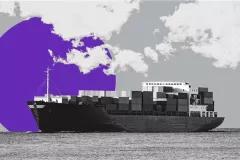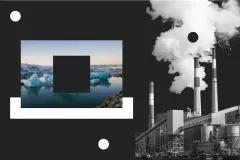Q&A with Thomas Day from NewClimate Institute – 14 September 2023
September 15 is the 1st anniversary of Samsung Electronics (hereon referred to as Samsung) announcing a new environmental strategy which includes pledges to achieve net zero emissions by 2050 and a declaration to join the RE100 initiative. This memo contains a Q&A reaction with the authors of the Corporate Climate Responsibility Monitor (CCRM), on the extent to which Samsung’ 2023 Sustainability Report released on 30th June represent an improvement on its climate strategy.
What were the findings of the CCRM, pertaining to Samsung’s climate strategy?
Based on analysis of Samsung’s public documentation from 2022, the Corporate Climate Responsibility Monitor (CCRM, published February 2023) rated Samsung Electronics’ climate strategy as “low” for transparency and “very low” for integrity. We found that Samsung’s net-zero target for 2050 amounted to a commitment to reduce just 20% of its 2019 emission footprint, due to its coverage of only scope 1 and 2 emissions. While long-term ambition fell short, plans for short-term action remain even less clear, with its 2030 net-zero carbon emissions target covering only specific divisions and emission scopes that may account for just 2% of the company’s 2019 emissions. Underpinning some of these shortcomings in Samsung’s targets is a lack of a clear plan or transparency on scope 3 emissions, which were not reported in Samsung’s public documentation despite accounting for approximately 86% of the company’s GHG emissions in 2021.
A new member of the RE100 initiative – we found considerable potential for improvement in Samsung’s current approach to renewable electricity. Samsung currently procures a low volume of renewable energy, continues to rely on low quality renewable energy certificates and commits to the relatively weak target year of 2050 for 100% renewable energy, although pathways consistent with limiting global warming to 1.5 °C would require the decarbonisation of power supply in OECD countries by 2030.
Has Samsung made any significant new commitments or claims in its 2023 Sustainability Report?
Samsung’s 2023 Sustainability Report does not significantly advance on announcements and targets that the company has previously communicated. The document reaffirms commitments announced as Samsung’s New Environmental Strategy in September 2022. The shortfalls of the company’s net zero and carbon neutrality targets appear not to have been addressed. The 2023 Sustainability Report makes particularly bold claims with regards to having “completed the transition to renewable energy” and having reduced its emissions by 59% in one year, which we consider to be somewhat exaggerated and misleading (see below).
What does it mean that Samsung has “completed the transition to renewable energy” in various countries?
Samsung faces considerable challenges to implement effective measures to decarbonise its electricity due to the lack of conducive regulatory frameworks for high quality renewable energy procurement in some of the countries that it operates, but a transparent recognition of the limitations that the company faces to implement more meaningful measures would be more constructive than absolute assertions that the transition to renewable energy is complete.
Samsung’s 2023 Sustainability Report and the accompanying press release make several references to the company having completed the transition to renewable energy use in for specific divisions and various countries including the U.S., Vietnam, India, Brazil, Hungary, Slovakia, and Poland. Although these claims imply in rather absolute terms that the job is done on renewable energy, we consider that Samsung’s renewable electricity procurement strategy is still in a stage of relative infancy compared to some of its industry competitors, and that much can be done to improve the significance of the company’s renewable energy procurement and effectively reduce its electricity-related emissions. Overall, the company reports that 31% of its electricity was derived from renewable sources in 2022, a respectable increase from approximately 20% in 2021. But the company has not advanced on its relatively unambitious target year of 2050 for 100% renewable energy, and the majority of its renewable energy procurement still comes from the purchase of low-impact renewable energy certificates, even in geographies where much higher quality procurement constructs are possible. Samsung’s assertion of having completed its energy transition in several key geographies contrasts considerably from the more transparent and constructive communications of competitors.
Despite Apple, Google and Microsoft claiming a much higher proportion of renewable energy consumption, these companies also point towards the major limitations of existing renewable energy procurement constructs for real emission reductions and set out plans for implementing more effective measures1. With its heavy use of renewable energy certificates and its annual-matching accounting method, Samsung’s approach is far less likely to lead to meaningful emission reductions than companies that have moved onto higher quality Power Purchase Agreements (PPAs) and those that are moving towards a 24/7 accounting method. Samsung says that it intends to expand its use of PPAs, but it does not imply that there are any limitations with current procurement constructs, nor that the company will exclusively pursue higher quality constructs moving forwards.
Apple’s newly announced pledge to reduce its emissions by 90% by 2050 is a far more transparent representation of Apple’s ambition and prospects than a carbon neutrality pledge for 2030. The announcement of this pledge could mark a significant improvement in the company’s long-term strategy, since the company had previously not clearly committed to any further action beyond its 2030 emission reduction pledge.
Has Samsung really reduced its emissions by 59% in one year?
Samsung’s 2023 Sustainability Report carries the claim that the company has reduced its scope 1 and 2 emissions by 59% year on year between 2021 and 2022. However, this claim is based on a comparison to a so-called business-as-usual trajectory of expected developments, the assumptions behind which are not clearly defined. In reality, the company’s scope 1 and 2 emissions in 2022 represent a 13% reduction on 2021 emission levels using a market-based accounting method where electricity matched by renewable energy certificates are treated as having a zero-emission impact. Using a location-based accounting method, where electricity-related emissions are reported based on local grid emission factors, scope 1 and 2 emissions in 2022 were only 1.5% lower than in 2021 and actually 13% higher than in 2020. Regardless of the accounting method used, the real trend in scope 1 and 2 emissions is a far cry from the 59% year-on-year reduction implied by Samsung. In any case, this claim does not consider scope 3 emissions; including scope 3 emissions, the company’s overall GHG emissions footprint increased between 2021 and 2022 by approximately 1%, according to our understanding of the data Samsung has disclosed2.
Has Samsung’s strategy for scope 3 emissions improved?
For the first time, Samsung’s 2023 Sustainability Report includes the disclosure of upstream and downstream scope 3 emissions, which reportedly account for 124.7 MtCO2e in 2022, mostly from downstream use of sold products. The disclosure of this information in Samsung’s public reporting represents a significant improvement in the transparency of its climate strategy, and may help its audiences to understand the context and limitations of Samsung’s net zero and carbon neutrality targets.
Although the disclosure of scope 3 emissions has improved in 2023, we still could not identify a clear commitment for the reduction of scope 3 emissions, and the measures outlined to address these emission sources remain ambiguous. As before, measures for material recycling and energy efficiency are either presented in relatively ambiguous terms without concrete short-term commitments, or those commitments are limited in scope to specific product lines. Without further information, it is not possible to know whether these plans represent developments that go significantly beyond business-as-usual product development and to what extent they would lead to the necessary degree of reductions for scope 3 emissions.
Given its plans and data available, will the company meet its targets? What would be most needed for them to show their sincerity or integrity?
Samsung should have no problem meeting their targets, chiefly because its targets may require very little meaningful action from Samsung’s side. A target for 100% renewable electricity by 2050 is highly unambitious for a major corporate player, even in a country with a complex regulatory environment for renewable electricity procurement. Multiple scientific pathway analysis show that OECD countries will need to fully decarbonise their power sectors by 2035 to be aligned with the Paris Agreement objectives. While South Korea’s power sector policies and plans are far from being compatible with the Paris Agreement’s 1.5 °C temperature limit, it would not necessarily require particularly ambitious policies for the country to make considerable progress towards power sector decarbonisation by 2050. In this highly plausible scenario, what does Samsung have to do to reach its target? Potentially nothing, if its target allows for it to simply wait for the grid around it to decarbonise itself. Other major companies from the sector including Google, Microsoft, Apple and TSMC have demonstrated that the leadership of major corporations can support and accelerate the energy transition, rather than waiting for it.
Another factor to consider is that Samsung is the only one of the aforementioned companies to continue to rely primarily on Renewable Energy Certificates. This procurement construct is very unlikely to have meaningful impact, and is immediately available at low cost, which is how Samsung claims to have already reached its target for “the transition to 100% renewable electricity” in several countries outside of South Korea.
It has been said that a new chip complex in Yongin, Gyenggi Province, which will accommodate Samsung's facilities, will be powered by onsite LNG-power plants. How would this have an impact on the company's green pledges?
If new manufacturing facilities are powered by LNG, this indeed significantly undermines Samsung’s climate credentials. There is a very weak case for any self-proclaimed climate leader to make new investments in fossil fuel based power generation, when the International Energy Agency has said that compatibility with the Paris Agreement would entail no new investments in fossil fuel infrastructure. While such a move would undermine Samsung’s climate credentials, it would not necessarily have any impact on the pledges that they have made, since these pledges are nowhere near ambitious enough to make Samsung a climate leader. The company’s net zero carbon emissions pledge for 2030 applies only to the DX division, which accounts in total for just 2% of the company’s total value chain emissions. The 2050 net zero carbon emissions pledge should in theory cover this emission source, but the target has a market-based accounting methodology, which under the current GHG Protocol accounting guidelines means that Samsung could simply purchase unbundled RECs to effectively offset the emissions from such LNG facilities. The GHG Protocol guidance is currently under revision and we would hope that the accounting provisions in this regard would be substantially tightened, although corporate voices appear likely to be highly influential in the revision process and it is not clear yet how this will play out.
Could the Korean government's energy policy put Samsung's green pledges in jeopardy and lead them to lose their global competitiveness?
The Climate Action Tracker’s assessment of South Korea’s policies and measures, especially for renewable energy, show that these measures are highly lacking in ambition, and suggest that the country could quite reasonable achieve much more progress than it plans to by 2030. Indeed this holds Samsung back compared to companies where national policy is more conducive. But it is not reasonable for Samsung – as one of the largest and most influential corporate actors in the country – to hide behind unambitious government policy as an excuse for limited progress. Much of the renewable electricity policy developments seen in other countries have come after years of prominent public advocacy campaigns from the major corporations that depend on such regulatory developments; compared to some of the efforts of Samsung’s major competitors, we could not identify a comparable degree of solution-oriented collaboration and advocacy from Samsung. Furthermore, recent policy changes in South Korea that now enable PPAs – albeit under comparatively costly and bureaucratic conditions – provide the means for Samsung to pull ahead of national policy and demonstrate leadership.
[1] Full analysis of the strategies from Google, Microsoft and Apple can be found in the 2023 Corporate Climate Responsibility Monitor.
[2] We understand from Samsung’s 2022 CDP response that its total value chain emissions amounted to 143.4 MtCO2e in 2021 (7.6 MtCO2e scope 1; 12.6 MtCO2e scope 2 location-based; 123.2 MtCO2e scope 3). Samsung’s 2023 Sustainability Report discloses a total of 144.6 MtCO2e in 2023 (5.97 MtCO2e scope 1; 13.9 MtCO2e scope 2 location-based; 124.7 MtCO2e scope 3). Since the 2023 Sustainability Report does not include historical data for location-based scope 2 emissions or scope 3 emissions, it cannot be confirmed whether these two data sets are comparable or if differences may arise due to methodological changes between years. A comparison of the company’s full value chain emissions between 2022 and 2020 is not possible due to the apparent incomplete disclosure of scope 3 emissions for 2020.






